Branding: Coordinating My Wardrobe to the HARP Colour Palette
Posted by Dorothy Lander: dorothy@tryhealingarts.ca The talented team at This is Marketing (https://www.thisismarketing.ca/) chose a unique colour palette to illuminate
This blog takes up Robin Wall Kimmerer’s challenge in her “Honorable Harvest” chapter in Braiding Sweetgrass—to honour the ethic of reciprocity, investing in abundance for both eater and eaten.
On Jan. 6, 2024, the Nova Scotia Aquaculture Review Board (ARB) released its ruling in favour of the application from Town Point Consulting Inc. (TPCI), awarding all three leases for a large-scale oyster fishery in Antigonish Harbour. https://arb.novascotia.ca/decisions
How long will this groundbreaking story endure in public consciousness? Beyond a one-week blip on social media and mainstream radio and TV?
Does it serve a purpose to shine a light on this done deal? Does it matter? Dr. John Graham-Pole and I (Dr. Dorothy Lander) are co-owners of HARP The People’s Press (www.tryhealingarts.ca), a publishing house in Antigonish County dedicated to the arts for health equity. HARP plans to keep this story alive for the world to learn from: how to balance economic development against a fragile ecosystem, against loss of biodiversity, against heritage preservation—and most critically—against public health, at a time in human history when the survival of our species is at stake.
What are the untold stories that did not feature in the ruling from the ARB, that were overshadowed by the competing science narratives? I’ll list a few: Indigenous traditional knowledge; treaty rights embedded in the 1783 license ensuring livelihoods for the Mi’kmaq in Antigonish Harbour; and the risks of desecrating the burial grounds of early Mi’kmaw Christians.
Rich fodder for investigative journalism? You bet. Will mainstream media like CBC’s Fifth Estate and What on Earth take this up? What about social media platforms and podcasts like those of the David Suzuki Foundation (https://davidsuzuki.org), the Ecology Action Centre (https://ecologyaction.ca) and Center for a Liveable Future at Johns Hopkins University (https://clf.jhsph.edu/)?
And in Antigonish itself: What about Social Justice Radio at http://socialjusticeradio.onelouder.ca/, a global/local radio show produced by St. Francis Xavier University’s Development Studies Student Society? Its mandate includes deepening the partnership between CFXU (93.3 FM) and Radio Ada in Ghana through their “call and response” partnership show. So how about a show that focuses on the site-specific actions taken to address the social, ecological, health, and climate challenges that commercial oyster fisheries in Antigonish and Ada raise. Initiatives in Ada include the use of discarded oyster shells to create coastal protection reefs.
Have you made your New Year’s resolutions? HARP resolves to take up David Suzuki’s challenge:
Anyone resolve to help overthrow consumer capitalism? If we come together and resolve to do better for each other and the planet, we could find a better path.
David Suzuki is referring specifically to the gas, oil and coal industries that rake in massive profits, all the while fueling the climate crisis. But it could apply to any human activity that supports consumer capitalism at the expense of our environment and public health.
The intersecting threads in the untold understory of introducing a commercial oyster fishery into Antigonish Harbour—90 acres, 50 km of rope, 400 anchors and 23,000 cages in the shallow estuary off Town Point—weave through HARP’s commitment to health equity and truth and reconciliation. Intersectional signifies that Indigenous-Settler relations, Indigenous knowledge, Indigenous rights, treaty rights, and heritage and cultural preservation are as relevant to decision-making as the eight “established criteria” that ARB Chair Jean McKenna laid out. The ARB did not stray from the eight determining factors for approving an aquaculture application that were legislated in 2015 in the NS Legislature.
the optimum use of marine resources;
the contribution of the proposed operation to community and Provincial economic development;
fishery activities in the public waters surrounding the proposed aquacultural operation;
the oceanographic and biophysical characteristics of the public waters surrounding the proposed aquacultural operation;
the other users of the public waters surrounding the proposed aquacultural operation;
the public right of navigation;
the sustainability of wild salmon;
the number and productivity of other aquaculture sites in the public waters surrounding the proposed aquacultural operation.
A focus on these factors effectively allows the ARB decision makers to discount or deprioritize public health, the climate crisis, the loss of biodiversity, heritage preservation, and Canada’s history of colonization and commitment to truth and reconciliation.
Would ARB have made a different ruling or even a modified ruling if these factors had been legislated as part of the decision-making process?
Does it matter?
Intersectionality is a feminist theory which analyzes various forms of oppression and hierarchies of power. It particularly applies to the power dynamics around what counts as “evidence”—as “science.” David Suzuki stresses the intersection of western science and Indigenous knowledge: “We settlers have to rediscover Indigenous values to shape policies, strategies and actions because clearly, the dominant paradigm doesn’t work.”
These are questions that investigative journalists and intersectional ecology researchers might pose:
Why did the ARB dismiss the scientific evidence presented by Friends of Antigonish Harbour (FOAH) expert witness , Dr. Peter Cranford, and seemingly accept as “flawless” the assertions made by TPCI’s expert scientist Dr. Jon Grant?
On what basis did ARB claim that the evidence presented by FOAH’s expert was “fundamentally flawed” and “the antithesis of a scientific endeavour”?
How could Dr. Cranford’s evidence be characterized as fundamentally flawed because of “inadequate monitoring,” given that he made three multi-day visits to Antigonish Harbour over the course of two years and placed a state-of-the-art electronic current meter in the centre of each lease area?
How could Dr. Grant’s evidence be upheld after he acknowledged he never even visited Antigonish Harbour to take samples or readings of any kind and based his scientific evidence solely on modelling techniques using data from other locations?
Was ARB acting on a mandate to privilege scientific evidence supported by original research published in peer-reviewed scientific journals over the evidence of lived experience and ancestral knowledge of Antigonish Harbour?
Could these attacks on FOAH and their expert scientist qualify as “mischaracterization,” the ARB charge levelled at FOAH’s critique of the TPCI applicant, Mr. Ernie Porter?
Does it matter?
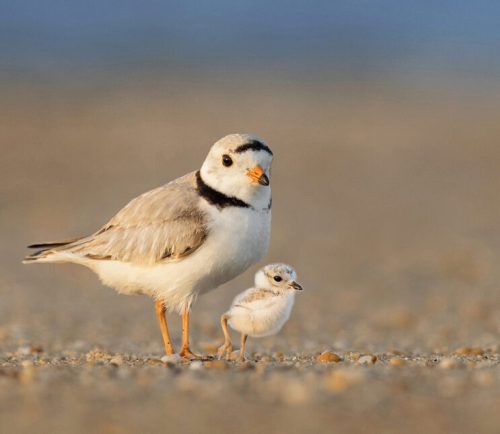

Does it matter?
I’m going to take you back 240 years to historical records highly relevant to the Honorable Harvest.
The HARP film 1784: (Un)Settling Antigonish showcases the truth and reconciliation pilgrimage to Town Point in the summer of 2015 and draws on historical records to create the Narrator’s script and the dialogue between Antigonish’s first European settlers and the Mi’kmaq, performed by a cast of performers representing the Nations of Mi’kmaq, Acadia, Africa, Irish and Scottish Celts, and England.
Narrator Rosemary Curry leads off the pilgrimage with HARP’s guiding principle: A healthy community knows its history. She goes on to state:
As we embark on this pilgrimage of truth and reconciliation, hold in your hearts that we are walking on sacred ground: the ancient burial grounds of the Mik’maq and the foundation stones and burial plots of Antigonish’s first Church of England.
I. The Honourable Harvest of Wild Oysters
Wild oysters feature several times in the dialogue, like this passage spoken by Colonel Timothy Hierlihy who was the leader of Antigonish’s first settlers when they sailed into Antigonish Harbour on May 12, 1784.
I can tell you what I encountered in abundance in this sheltered inlet—oysters. They were plump, some of them as big as my shoe. The Indians would shuck them here and pile them up like rocks over one another. Oysters were both food and commerce.
Back to Robin Wall Kimmerer. She writes in Braiding Sweetgrass that wild leeks did not come back after the forests were razed and the land tilled for agriculture. Ecologists don’t know why the land is no longer hospitable for these understory plants. Today, the wild oysters in the estuary off Town Point fall way short of being as “big as my shoe.” We don’t have scientific evidence explaining why wild oysters have decreased in size since the 18th century. Kimmerer’s words could apply:
Wild leeks/oysters and wild ideas are in jeopardy. We have to transplant them both and nurture their return to the lands/waters of their birth…restoring the Honorable Harvest, bringing back the medicine. (p. 201)
Does it matter?
II. Loss of Biodiversity
The 2015 truth and reconciliation pilgrimage to Town Point was designed as popular theatre, in which the audience serve as spect-actors in the unfolding story. Mi’kmaw Elder Thomas Christmas rose from the audience to tell the history of the loss of biodiversity in Antigonish Harbour in the early days of colonization.
We had seafaring canoes. We fished for porpoise, whale, sturgeon, even shark. … Martin Prosper was the last Mi’kmaq to hunt porpoise for oil lamps. This was early 1900s. Unfortunately, our way of life has changed because we accepted all of you.
Did TPCI in their consult with the Office of L’Nu Affairs seek out Indigenous traditional knowledge of ways to stem the tide of loss of biodiversity in Antigonish Harbour?
Would the ARB characterize Indigenous ancestral knowledge as fundamentally flawed on the basis that it was not adequately monitored?
Does it matter?
III. We Are All Treaty People
Narrator: On December 19, 1783, a license for the Mi’kmaq land on which we are now, was issued in Halifax to the chief. The Public Archives of Nova Scotia holds this document from the Indian Superintendent’s letter-book. It is believed that the Mik’maq built a Jesuit chapel near the point around 1724. Early survey maps also name “Indian burial grounds” here — the burial grounds for Antigonish’s first Mi’kmaw Christians. Let us listen to the details of that license of 1783.
[Enter Mi’kmaw family from stage left campfire and read in unison.] [Mi’kmaw readers played by Paula Pictou, Ardena Paul, and Mary Taylor]
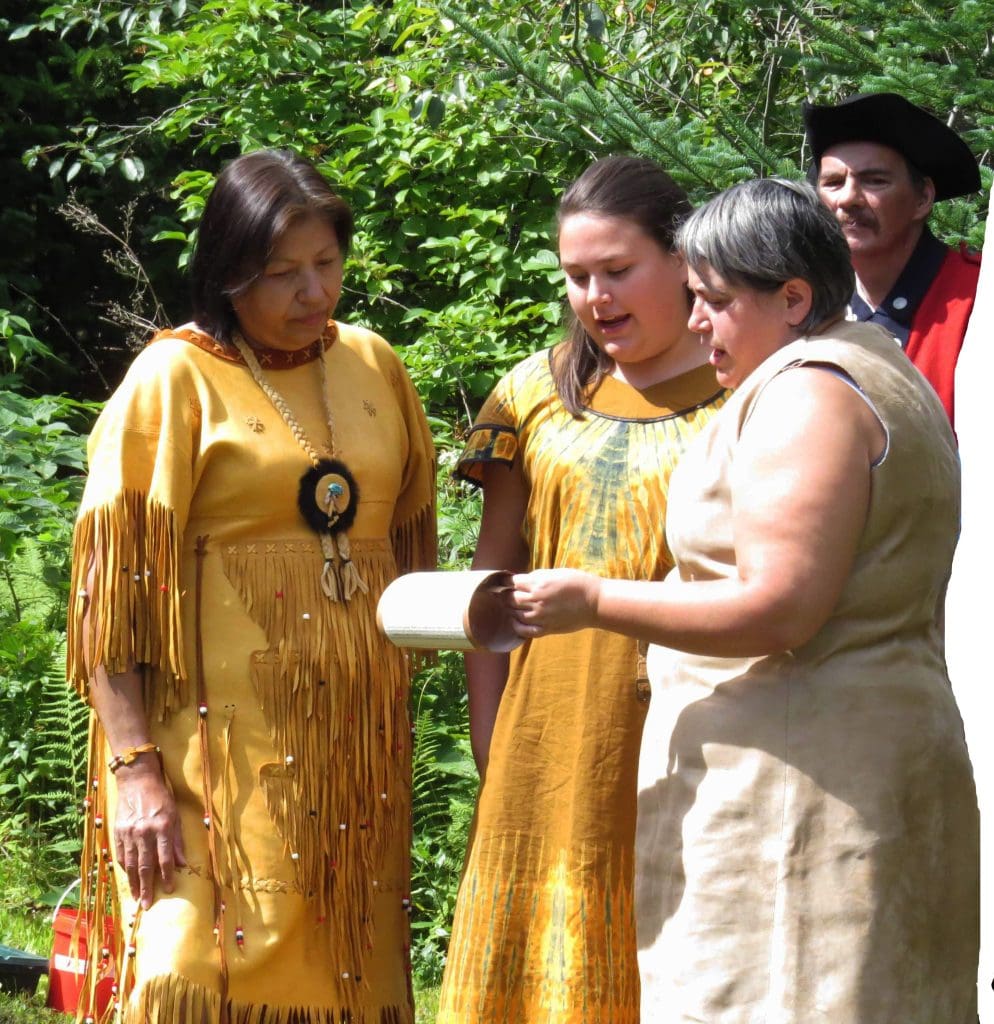

A License to be granted Anthony Barnard, chief of the Tribe of Antigonish Indians for them to Occupy Undisturbed the several Villages and Tracts they have improved and settled upon on the River [that is, Antigonish Harbour] of the same name, to wit, on the Peninsula on the Western side of the River, where the Mass House is placed, also the Island near the Western side of the River, together with the village near the head of the Tide on Both sides the River with Liberty of Hunting and Fishing as Customary.
There is no expiry date on treaties.
Does it matter?
Sacred Burial Grounds
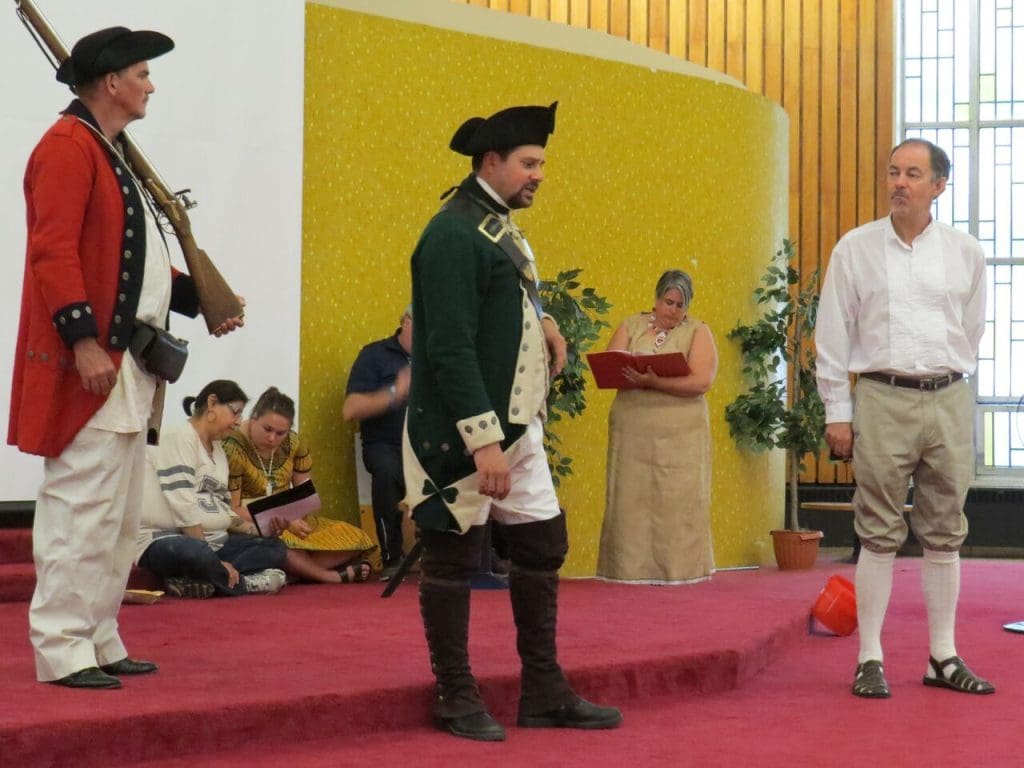

Captain Timothy Hierlihy: What my father is asking me to tell you is that my sister Mary, just 27, died on our voyage here. We kept her remains on board for two days. We looked for a pleasing burial site in the woodland thickets. We buried her under a bed of green moss and together read prayers for her eternal soul. Keep in mind, we did not have a site for our church or a burial ground when we arrived in 1784 and we needed to bury her with godspeed.
We don’t know the exact location of the unmarked grave of Mary Hierlihy or the number and names of the Mi’kmaw buried near the Jesuit Mass House. We know that ancient Indigenous artifacts keep turning up at Town Point where residents live today. Given massive shoreline erosion in Antigonish Harbour since the early 1700s, how close are Indigenous and Settler graves to the harbour floor?
Does it matter?
“Anyone who can predict what can happen scares me.” The precautionary principle is even articulated in the Rio Declaration and signed in 1992 by representatives of 178 nations, stating that a lack of scientific certainty should not preclude states from adopting cost-effective measures to control environmental risks. Echoing Albert Einstein: “Not everything that counts can be counted.” In the context of Antigonish Harbour, the precautionary principle requires adopting measures to mitigate the risks of eel grass and piping plovers going the way of the porpoise.
Does it matter?
Did ARB take into account the precautionary principle in the context of the sacred burial grounds at Town Point? This same principle explains the long delay in repurposing the site of the former Halifax Public Library or selling it to developers— the risks of disturbing the graves of an estimated 20,000 former city residents buried beneath its grounds, adjacent parking lots, streets and sidewalks. Why not this concern for the Mi’kmaw burial grounds at Town Point?
Did TPCI even consider the proximity of the lease sites to the ancestral burial grounds of Mi’kmaw Christians?
Does it matter?
Posted by Dorothy Lander: dorothy@tryhealingarts.ca The talented team at This is Marketing (https://www.thisismarketing.ca/) chose a unique colour palette to illuminate


L to R Clockwise: John Graham-Pole aged 2 on Mummy’s knee with sisters Elizabeth, Mary, and Jane, High Bickington, Devon,
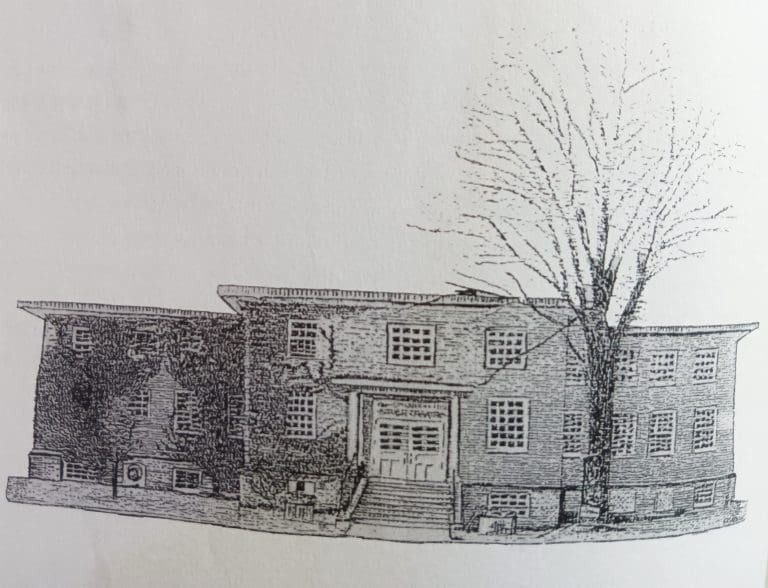

Posted by Dorothy Lander Once a month, John Graham-Pole and I showcase the publications of HARP The People’s Press at
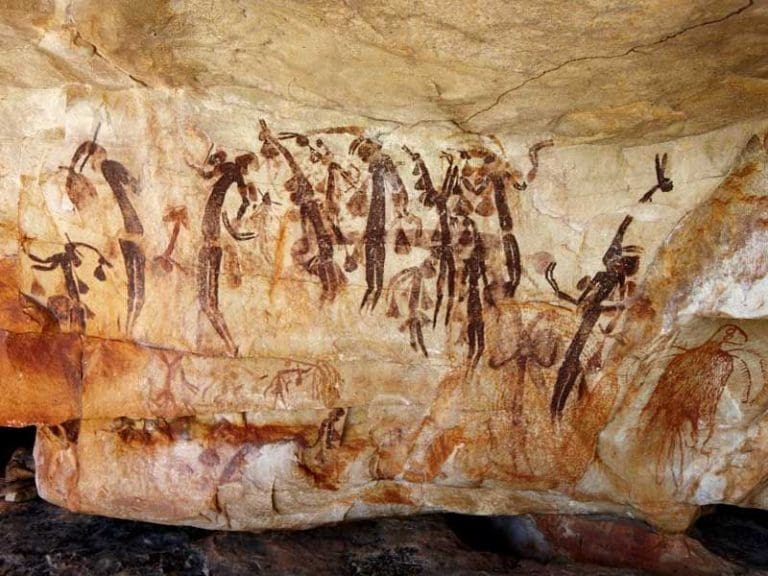

Aboriginal Rock Mural Kimberley Region, Western Australia Posted by John Graham-Pole I don’t have answers to any of these questions,
| Cookie | Duration | Description |
|---|---|---|
| cookielawinfo-checkbox-analytics | 11 months | This cookie is set by GDPR Cookie Consent plugin. The cookie is used to store the user consent for the cookies in the category "Analytics". |
| cookielawinfo-checkbox-functional | 11 months | The cookie is set by GDPR cookie consent to record the user consent for the cookies in the category "Functional". |
| cookielawinfo-checkbox-necessary | 11 months | This cookie is set by GDPR Cookie Consent plugin. The cookies is used to store the user consent for the cookies in the category "Necessary". |
| cookielawinfo-checkbox-others | 11 months | This cookie is set by GDPR Cookie Consent plugin. The cookie is used to store the user consent for the cookies in the category "Other. |
| cookielawinfo-checkbox-performance | 11 months | This cookie is set by GDPR Cookie Consent plugin. The cookie is used to store the user consent for the cookies in the category "Performance". |
| viewed_cookie_policy | 11 months | The cookie is set by the GDPR Cookie Consent plugin and is used to store whether or not user has consented to the use of cookies. It does not store any personal data. |